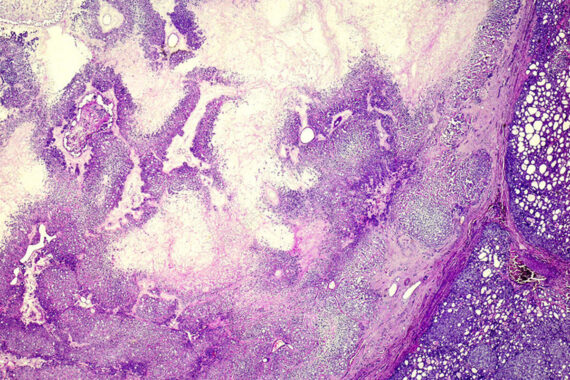Dr Eleanor Thornett and Dr Pallavi Latthe advise on effective referral routes for gynaecological conditions
Advice and guidance
Advice and guidance (A&G) services can suggest required investigations. They may confirm a diagnosis or suggest differential diagnoses, offer advice on treatment options for menstrual dysfunction and pelvic pain or signpost to the appropriate specialty – for instance, some conditions like precocious puberty changes are better managed by a paediatric endocrinologist than a gynaecologist.
A&G can also be useful for long-term management of conditions such as polycystic ovarian syndrome and menstrual dysfunction when standard management has failed.
Investigation results like exact values of hormones (FSH, LH, testosterone) are more useful than reporting them as normal, because the guidance is based solely on information from the requesting GP.
Occasionally, GPs may use the service for non-clinical questions, such as checking if treatment for a condition is funded in the NHS (for instance, excessively long labia that are symptomatic) or what private options are available and suggestions for an appropriate specialist (for instance, a paediatric plastic surgeon).
A&G should not be used for red-flag symptoms in women over the age of 40 years.
Unless your trust provides a rapid-response A&G service, do not refer menorrhagia with low haemoglobin or pelvic pain needing opiates via this route.
Emergency referrals
Many patients with acute gynaecological problems can be triaged and managed by rapid-access gynaecology clinics. Problems requiring urgent but not emergency treatment can be referred via this route – for example, a Bartholin’s abscess in someone who is clinically well, a displaced IUCD with pain, or a postoperative ongoing subacute problem.
Examples of problems that warrant emergency referral include:
- Suspected ovarian torsion.
- Tubo-ovarian abscess.
- Heavy menstrual bleeding with haemodynamic compromise.
- Vulval abscess that is increasing in discomfort and will need incision and drainage.
- Suspected toxic shock syndrome.
- Ovarian hyperstimulation syndrome (a complication of IVF presenting with abdominal swelling, pain and vomiting, sometimes with dehydration and thrombosis).
- Postoperative complications like suspected internal bleeding or evidence of external bleeding, ileus, visceral injury or thromboembolism.
Problems of early pregnancy should be referred as an emergency to the on-call team or to A&E in the following scenarios:
- Refractory nausea and vomiting with ketonuria, or if the patient is unable to tolerate medications.
- Miscarriage with haemodynamic compromise or signs of systemic infection.
- Suspected ectopic pregnancy in a woman who is haemodynamically unstable, or in whom there is concern about the degree of pain or bleeding. [NICE. Ectopic pregnancy and miscarriage: diagnosis and initial management. 2021]
Well women with early pregnancy problems may be triaged by the early pregnancy unit.
Women wishing for termination of pregnancy should contact the British Pregnancy Advisory Service (BPAS).
Urgent two-week-wait referrals
A full-time GP is likely to diagnose one gynaecological cancer every three to 10 years.
Ovarian cancer
Refer if there is ascites or a pelvic or abdominal mass that is not obviously uterine fibroids, or if the ultrasound suggests ovarian cancer. Suspicious features would be multilocular cysts bigger than 10mm diameter with an irregular outline and a solid component bigger than 7mm, prominent blood flow and ascites. If there is raised CA125 with normal ultrasound, assess or investigate for other causes. The risk of malignancy index (RMI) could be calculated (menopausal status, ultrasound score and CA125 level) and refer if RMI is 250 or greater.
Endometrial cancer
Refer using a suspected cancer pathway for endometrial cancer if there is postmenopausal bleeding. If bleeding has been fully investigated (including hysteroscopy) then suggest re-referral if there are recurrent symptoms after six months. If bleeding has not been fully investigated re-refer at point of symptoms.
Cervical cancer
Use a suspected cancer pathway referral if the appearance of the cervix is consistent with cervical cancer.
Vulval cancer
A full-time GP is likely to diagnose approximately one person with vulval cancer during their career. Clinical features include unexplained vulval lump, ulceration or bleeding.
Vaginal cancer
Most GPs will not encounter a woman with vaginal cancer during their career. Refer an unexplained palpable mass in or at the entrance to the vagina.
Consider a direct access ultrasound scan to assess for endometrial cancer in women aged 55 and over with a first presentation of unexplained vaginal discharge, or with subsequent presentations in combination with thrombocytosis or haematuria (micro or macroscopic). Women with macroscopic haematuria who are also presenting with anaemia, thrombocytosis or hyperglycaemia should also be referred.
Carry out tests like serum CA125 or ultrasound of abdomen and pelvis if a woman reports any of the following symptoms on a frequent basis – particularly more than 12 times per month, and especially if she is over 50 years of age:
- Persistent abdominal distension (women often refer to this as ‘bloating’).
- Feeling full (early satiety) or loss of appetite.
- Pelvic or abdominal pain.
- Increased urinary urgency or frequency.
- Unexplained weight loss, fatigue or changes in bowel habit.
Routine referrals
These referrals are appropriate for patients with chronic problems for which management in primary care has been ineffective, when the diagnosis is unclear, or for consideration of surgery. It may be appropriate to use A&G in the interim.
Typical reasons for referral include pelvic pain thought to be of gynaecological aetiology, menorrhagia, prolapse, urinary incontinence, vulval lesions (non-malignant), infertility, delayed puberty, congenital or anatomical disorders and menopause problems.
Dr Eleanor Thornett is an SHO and Dr Pallavi Latthe is an obstetrics and gynaecology consultant at the Birmingham Women’s and Children’s NHS Foundation Trust

















